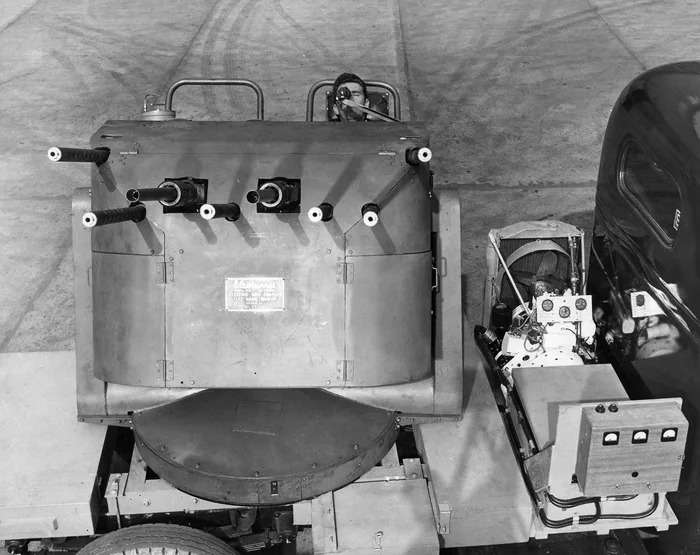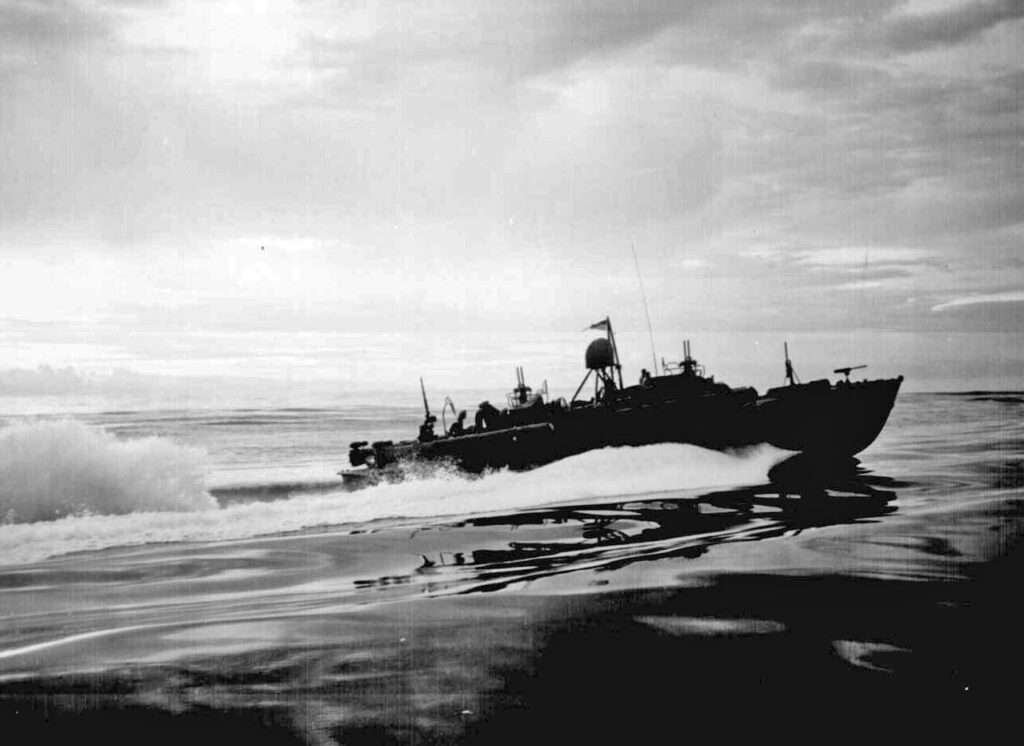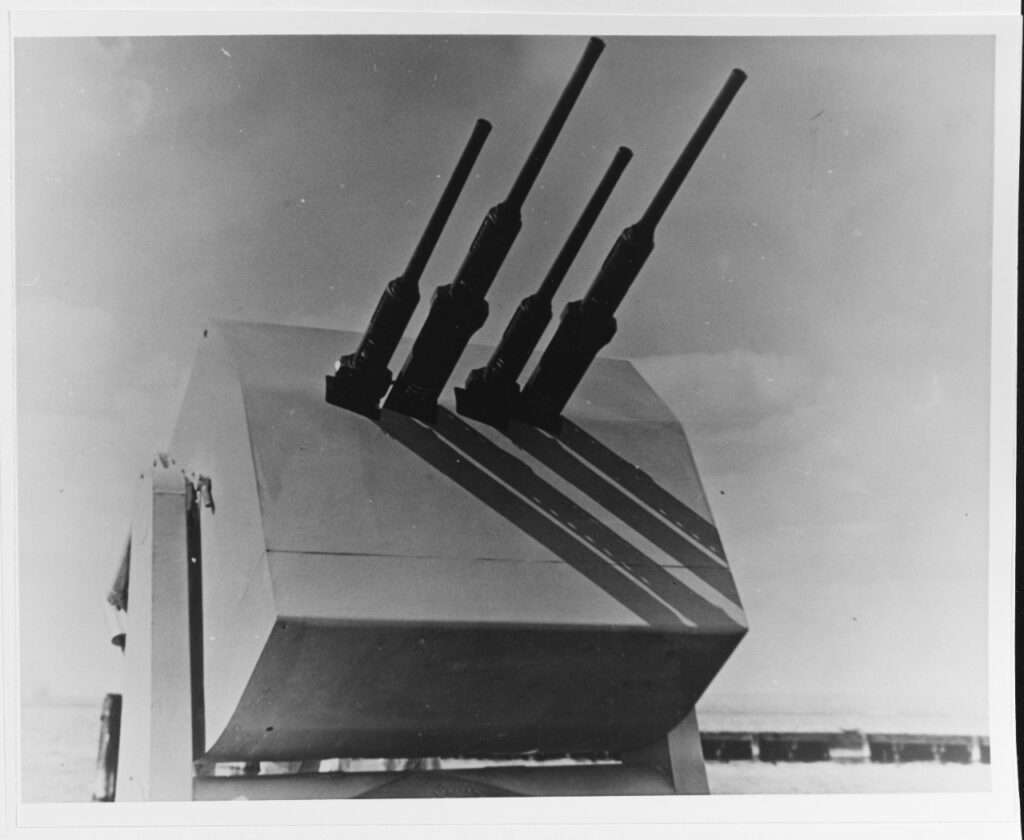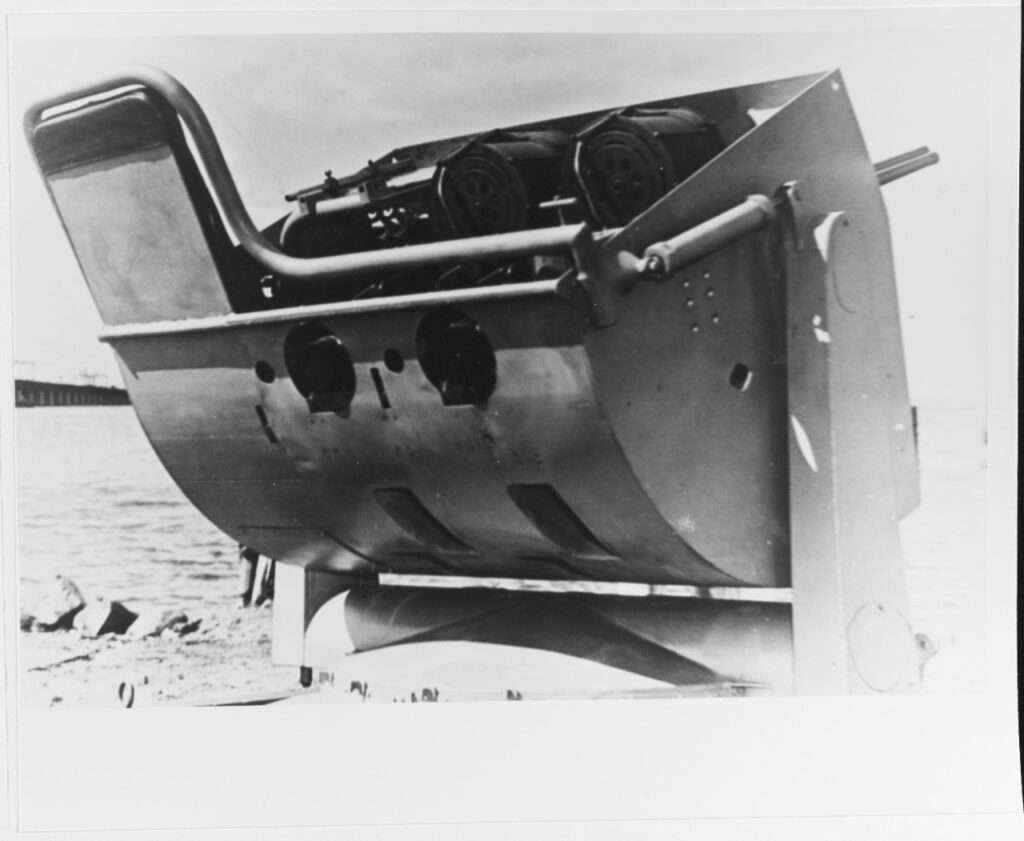
The PT Boat Turret With a Deadly Bite – The Elco Thunderbolt
The PT Boat proved itself to be a formidable weapon during the Second World War. However, it wasn’t until a change of doctrine and an evolution in weaponry that its full potential was realised.
The PT Boat
The concept of fast, small boats armed with torpedoes can be traced back to the late 19th century. However, it was in the interwar period that experimentation and development of PT boats began in earnest. Various countries, including the United States, conducted trials with small torpedo-carrying boats to assess their viability in naval warfare.
 An 80 foot Elco PT Boat in New Guinea, 1943.
An 80 foot Elco PT Boat in New Guinea, 1943.
In the United States, two main companies, Higgins Industries and Electric Boat Company (Elco), played significant roles in the development and production of PT boats. Higgins focused on the construction of wooden-hulled boats, while Elco utilized plywood construction techniques. Their designs emphasized speed, maneuverability, and the ability to operate in shallow waters.
 A variation of the Elco Thunderbolt equipped with four 20 mm guns.
A variation of the Elco Thunderbolt equipped with four 20 mm guns.
The typical PT boat of World War II measured around 80 feet in length, with a shallow draft and a displacement of about 20-30 tons. They were powered by gasoline engines, usually with multiple engines to achieve high speeds of around 40-50 knots. PT boats were armed with torpedoes, machine guns, and cannons, providing them with offensive and defensive capabilities.
Change In PT Boat Tactics
During the New Guinea campaign, the Japanese operated shallow draft barges in order to resupply their forces. The barges moved at night and in extremely shallow waters, leaving Allied vessels unable to persue them. Consequently, PT boats were deployed as an alternative solution.
 A view from behind the Elco Thunderbolt.
A view from behind the Elco Thunderbolt.
However, it soon became apparent that torpedoes proved ineffective against the shallow-draft barges, as they effortlessly passed beneath them without causing significant damage. This realization led to a strategic shift, prioritizing increased firepower to quickly engage and eliminate the enemy vessels, followed by a swift retreat to safety.
The Elco Thunderbolt
The PT boat’s increased firepower came in the form of the ‘Elco Thunderbolt’. It was a single-person electric powered turret that went through several iterations.
An early iteration of this turret incorporated a combination of two Oerlikon 20mm cannons and six M2 .50 caliber heavy machine guns. Additional configurations were also tested, such as four Oerlikon cannons with two M2s, or solely the four Oerlikon cannons.
 An early Elco Thunderbolt with six M2 machine guns and two 20 mm guns.
An early Elco Thunderbolt with six M2 machine guns and two 20 mm guns.
Regardless of the specific armament arrangement, these turrets boasted a remarkable capability where a single operator could unleash a formidable barrage of bullets towards approaching enemy targets.
The Thunderbolt was quickly employed on PT boats. However this was towards the end of the war so they saw little use.
The Elco Thunderbolt’s legacy continues to influence naval weapon design and contribute to the development of effective and efficient armament systems. In present-day naval operations, the United States Navy employs similar mounts, reminiscent of the Thunderbolt turret, for the Mk 38 Bushmaster, which is a formidable 25mm chain gun.
News
The Hanging Temple: China’s 1,500-Year-Old Cliffside Marvel of Faith and Engineering
The Hanging Temple: China’s 1,500-Year-Old Cliffside Marvel of Faith and Engineering Perched precariously on the cliffs of Mount Heng in Shanxi Province, China, the Hanging Temple, also known as Xuankong Temple, Hengshan Hanging Temple, or Hanging Monastery, is an architectural…
The Willendorf Venus: A 30,000-Year-Old Masterpiece Reveals Astonishing Secrets
The Willendorf Venus: A 30,000-Year-Old Masterpiece Reveals Astonishing Secrets The “Willendorf Venus” stands as one of the most revered archaeological treasures from the Upper Paleolithic era. Discovered in 1908 by scientist Johann Veran near Willendorf, Austria, this small yet profound…
Unveiling the Maya: Hallucinogens and Rituals Beneath the Yucatán Ball Courts
Unveiling the Maya: Hallucinogens and Rituals Beneath the Yucatán Ball Courts New archaeological research has uncovered intriguing insights into the ritual practices of the ancient Maya civilization. The focus of this study is a ceremonial offering found beneath the sediment…
Uncovering the Oldest Agricultural Machine: The Threshing Sledge’s Neolithic Origins
Uncovering the Oldest Agricultural Machine: The Threshing Sledge’s Neolithic Origins The history of agricultural innovation is a fascinating journey that spans thousands of years, and one of the earliest known agricultural machines is the threshing sledge. Recently, a groundbreaking study…
Nara’s Ancient Sword: A 1,600-Year-Old Protector Against Evil Spirits
Nara’s Ancient Sword: A 1,600-Year-Old Protector Against Evil Spirits In a remarkable discovery that has captured the attention of archaeologists and historians alike, a 7.5-foot-long iron sword was unearthed from a 1,600-year-old burial mound in Nara, Japan. This oversized weapon,…
The Inflatable Plane, Dropped Behind the Lines for Downed Pilots
Experimental The Inflatable Plane, Dropped Behind the Lines for Downed Pilots The Inflatoplane from Goodyear was an unconventional aircraft developed by the Goodyear Aircraft Company, a branch of the renowned Goodyear Tire and Rubber Company, also famed for the Goodyear…
End of content
No more pages to load











